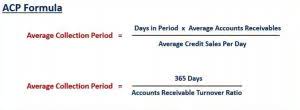
On top of that, brokers and contract traders often charge fees, premiums, and margin rates and require you to maintain a margin account with a specific balance. This means that if you lose on your trade, you’ll still be on the hook for extra charges. Adam Hayes, Ph.D., CFA, is a financial writer with 15+ successful use of financial leverage requires a firm to years Wall Street experience as a derivatives trader. Besides his extensive derivative trading expertise, Adam is an expert in economics and behavioral finance.
- In contrast, if funds are raised through equity shares, then the dividend to be paid is not a fixed charge.
- Crucially, financial leverage can help boost investment results by increasing the Return on Equity (ROE).
- A company may take on debt to buy another company, for example, as long as they believe owning the new company will make them more money than it costs to service the debt of the purchase.
- While taking on debt means that a company will need to pay interest expenses, the assets acquired using that debt financing are expected to earn an amount of money greater than that interest expense.
- It makes sense, after all, that lenders would be wary about lending to a company who already has a pile of debt.
Cash Flow Statement: Breaking Down Its Importance and Analysis in Finance
A higher ratio indicates stronger ability to cover interest payments. You could use a margin account, which allows you to borrow money from your broker https://www.bookstime.com/articles/toa-global to invest. Let’s say you borrow an additional $10,000 at a 5 percent interest rate. While these benefits can be enticing, it’s essential not to overlook the potential pitfalls of using financial leverage. Learn about the definition of returns in investing, the importance of returns, and how to calculate returns. As opposed to using additional capital to gamble on risky endeavors, leverage enables smart companies to execute opportunities at ideal moments with the intention of exiting their leveraged position quickly.
Risks of leverage

Financial leverage is the extent to which fixed-income securities and preferred stock are used in a company’s capital structure. Financial leverage has value due to the interest tax shield that is afforded by the U.S. corporate income tax law. The use of financial leverage also has value when the assets that are purchased with the debt capital earn more than the cost of the debt that was used to finance them. Maintaining a prudent capital structure is another paramount practice.

Consumer Leverage Ratio

The most obvious indicator of too much leverage is an inability to pay off debts. If a company defaults on its lending agreements, it has leveraged too much debt. There are a lot of arguments both for and against the use of financial leverage as a company or investor. The most important argument for it tends to be that leveraging can allow you to make more money with less input. When you can invest $10 million by only putting up $1 million, that can multiply pretty fast.
- DuPont analysis uses the equity multiplier to measure financial leverage.
- Our writing and editorial staff are a team of experts holding advanced financial designations and have written for most major financial media publications.
- It should be noted that equity shareholders are entitled to the remainder of the operating profits of the firm after meeting all the prior obligations.
- Since Acme Inc. bought their facility with cash, they can now sell it for $220,000 for a $20,000 profit.
- All of our content is based on objective analysis, and the opinions are our own.

However, If a loss of 20% is made from selling the houses, David gets $400,000 to himself and suffers a loss of $100,000 (when he doesn’t use financial https://www.instagram.com/bookstime_inc leverage). When he uses financial leverage of $300,000, even with a 20% loss (the house is now worth $640,000), his creditors still get their $300,000 initial loan and $30,000 annual interest. Let’s calculate David’s return on equity using this formula for the 20% increase in the value of the asset. The interest coverage ratio compares the “earnings before interest and taxes” (EBIT) of a borrowing company with its interest expenses. To calculate its debt-to-capital ratio, you have to first aggregate similar data together. For example, an accounting software, AlphaBeta acquired a short-term loan of $50,000 and a long-term loan of $200,000.
